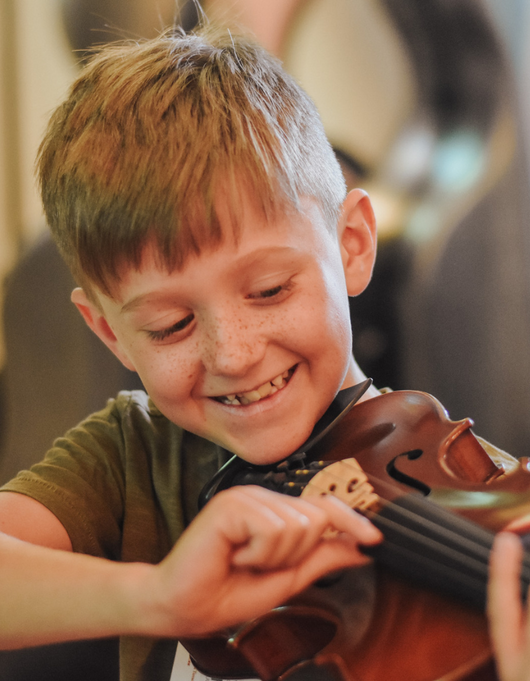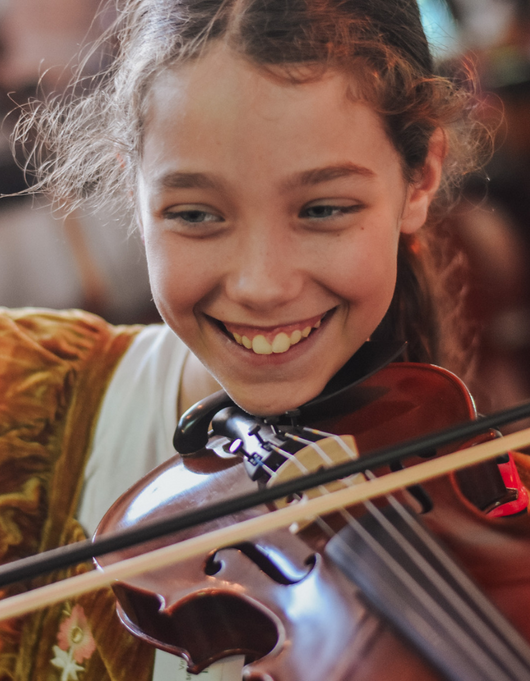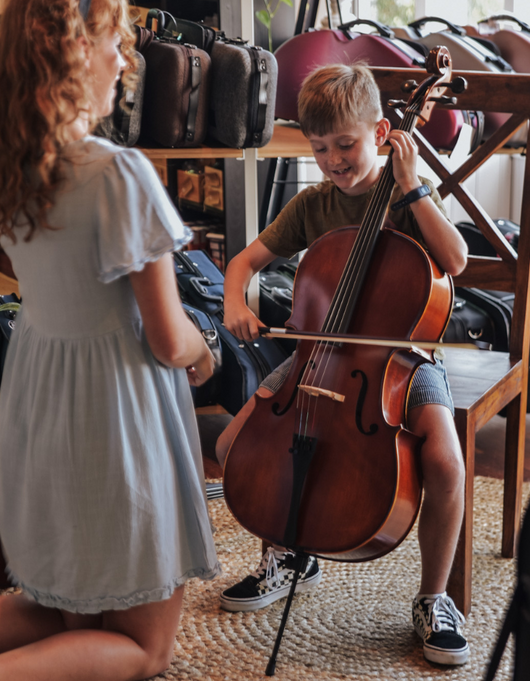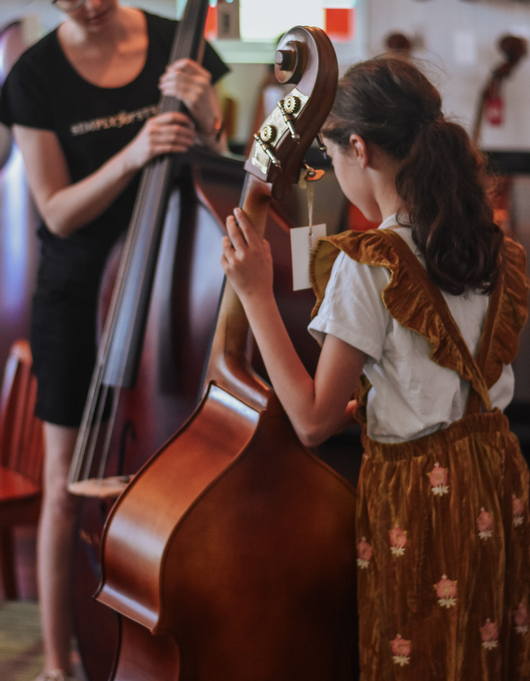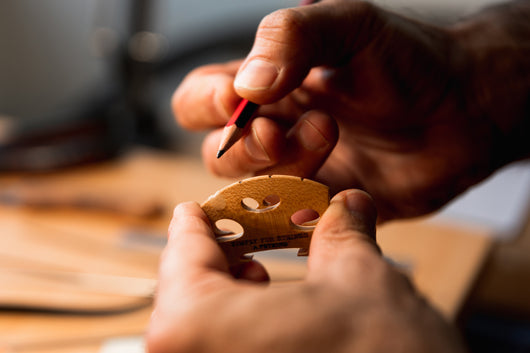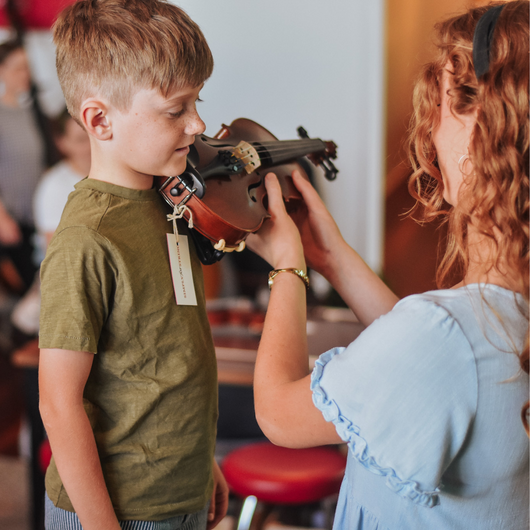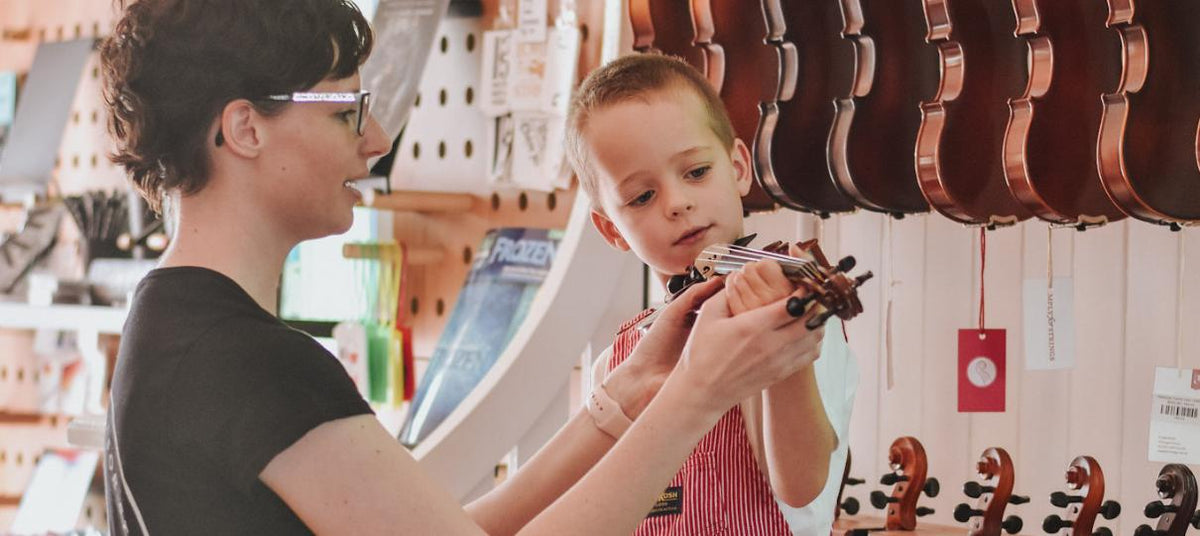Learning a new instrument, language or skill is one of life’s great challenges. It can be incredibly rewarding as the development of new skills encourages us to grow and discover new ways of thinking and working.
There will be ups and downs, of course, and as a parent it is important to be encouraging and positive during the downs and ups to ensure a lifelong love of learning. Here we discuss some of the ways you can help your child grow with music, especially if it’s the first time music has come into your home.Walk this journey with them
Watch YouTube clips of famous musicians performing with your child, or take them along to a classical music concert! There are lots of ways you can walk alongside your child on their musical journey. Encouragement is key, whether it’s putting on weekly home concerts or helping your child clean their instrument after practicing.
The most important day of every week is the afternoon of the lesson day. Your child only has a half-hour lesson each week at school, so your support and encouragement is invaluable. On the days that your child has a music lesson, be sure to talk about what they have learnt today. Don’t leave it until tomorrow: it will be mostly forgotten! By looking at their book from the first lesson, reading the instructions, asking your child to explain it and show you what they did in their lesson, you’ll learn alongside them and be well prepared to help guide them through their practice sessions.

Support practice time
Give your child a practice area where they can play without too much distraction. Make sure there is a music stand and good lighting. Encourage small amounts of practice time each day, rather than one big session on the weekend. It’s much easier to form a habit of 10 minutes each day. Although you may not know how to play the instrument yourself, you can still help by supervising practice time. You’ll notice things your child won’t, simply because you’re a grown-up. As an involved observer, you’ll be able to notice things like sound and technique, and encourage your child throughout their learning journey.
Make sure your child is always prepared for their lessons and rehearsals with their instrument, sheet music, pencil and notebook. It’s best to arrive 10-15 minutes early to rehearsals and lessons so your child has enough time to unpack their instrument and get settled and ready to start.
Practice doesn’t make perfect, it makes permanent. Only perfect practice makes perfect.
If your child plays through the homework a few times and isn't aware of mistakes, then repetition is going to train those mistakes into the brain. We never learn by hearing/doing once. We do it several times each day, and by next lesson we will remember correctly what was taught in the last lesson. Encouraging your child to remember the key takeaways from each lesson will spark success.
Tips for tackling practice
Your child might jump into practicing every afternoon, or they might avoid it altogether. Here are some tips for how to approach practicing. Have a chat with your teacher to see what other techniques they recommend too!
Good practice is simply playing each line/piece of music/exercise correctly, and repetitively.
The best formula is to take the first practise item, carefully play it, making sure of the following things:
- the hand and arm positions are correct,
- the notes are properly in tune, and
- they are played with the right counting (“in time”)
- Play correctly three times in a row.
- If a mistake is made, gently remind or point it out; then go back to start again.
- 3 times, correctly, in a row.
- Then do the same with the next practice item.
If you can start the journey in this careful, encouraging way, then practice doesn’t need to take long. Probably the first term’s practice should take ten to fifteen minutes at the most, if care is being taken and you’re not having to repeat too much to correct it. This same practice needs to be done each day for a week to really train into your child the skills being learned in this week’s lesson.
Eyes on technique
Visit Nicola Benedetti’s YouTube page to get acquainted with the basics of violin technique.
We recommend watching Nicola’s amazing videos, as well as having a read of the pages in your child’s book that explain the basics of technique. Method books should explain the correct handshape, arm position and posture required of players. With a stringed instrument, correct technique is probably the most important thing of all to get right from the beginning. Your child’s fingers and bodies haven’t had to learn this yet or develop the muscles needed, so it does involve time and encouragement from parents and teachers alike.
Make sure your child feels comfortable whilst playing, and if they express discomfort, be sure to let their teacher know. It may be a simple change of a chin rest or shoulder rest to get your child back to a relaxed playing position.
Watch and listen whilst your child plays
Give helpful and positive feedback even if it does sound a little ‘dying cat!’ Your positive feedback will ensure they keep on keeping on. Encourage your child to continue, even when it might sound less than perfect, for every wrong note they are closer to the right note. Encourage long, firm but gentle bow strokes to avoid scratchy sounds.
If your teacher has used markings on the fingerboard to show where the fingers are meant to be placed, you’ll be able to easily spot if your child is following these markings. If the fingers are out of place, it will sound out of tune and probably unpleasant to both you and your child. With your guidance, you can help your child to develop good intonation by keeping an eye on those markings.
Read our beginner's guide to tuning a violin here.

Use the tools the teacher has given your child
Usually, teachers will give you or your child a list of things to guide their practice for the week. It could be a sheet of exercises, or a page in a book. If there are notes, read them and use them to help guide your child throughout the week.
If your child’s book has a CD or online accompaniment, we highly recommend using them! The accompaniment will help your child hear when they are playing in time and in tune, and it helps make practice more fun. Dance around and make them laugh! Having fun makes for better learning. If the book uses practice software with an authorisation code, set it up and use it. The program will be a brilliant resource and provide extra enjoyment and challenge.
If your child wants some extra fun, have a chat with our friendly team about modern and popular sheet music albums!
Protect your child from feeling overwhelmed
With so much to learn, so much to get right, that it can feel pretty overwhelming. This is normal! Understand it is a long process with a wonderful end result. Be patient and encouraging. Have a little family concert each week to help your child show off their new skills and build confidence.



